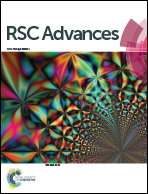Novel approach of adaptive laboratory evolution: triggers defense molecules in Streptomyces sp. against targeted pathogen
Abstract
The adaptation and evolution of microorganisms under selective pressure is the major cause of the development of antibiotic resistance. However, our present study presents adaptive laboratory evolution as an efficient tool to mine for and develop targeted bioactive molecules. Cryptococcal meningitis is an emerging neurological disease with limited therapeutic options. In the present study, a new marine anticryptococcal strain of Streptomyces variabilis AFP2 was co-cultured with C. neoformans with periodic transfer for 30 days. AFP2 displayed improved anticryptococcal activity post co-culture versus the parental type. The metabolomes of the parental and evolved strains were analyzed by HPLC-UV and GC-MS. The changes in phenotype and chemotype between the parental and the evolved strain were analyzed to determine the evolution of new traits. About 21 new metabolites alien to the parent strain were seen to be produced by the evolved strain. Among these, a few of the induced molecules such as DL-alanyl-L-leucine, dihydro-3,3-dimethyl-2(3H)-furanone, enanthamide, 1,3,5-cycloheptatriene and 1-aziridineethanol were not reported to have antifungal activity. In addition, these molecules were not reported in S. variabilis. Evolutionary fitness analysis revealed a 64-fold or 98% reduction in the growth of C. neoformans for the evolved strain S3, with an overexpression of compounds of ∼52%. Hence, the present study confirms that an integrated approach using adaptive laboratory techniques and co-culturing techniques is useful to discover potential molecules active against targeted pathogens.


 Please wait while we load your content...
Please wait while we load your content...